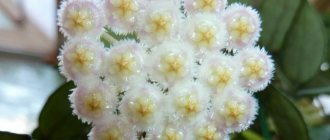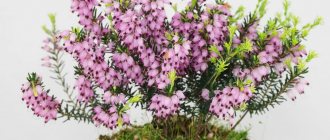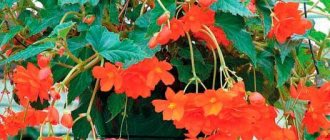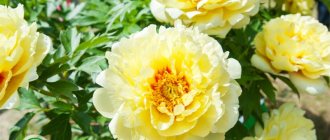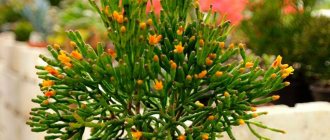If there is a shady corner in the garden in which you want to plant something, a star or astrantia will help solve the problem. Delicate, round and at the same time star-shaped flowers of this herbaceous plant shine like beads in a brooch. These are original perennials and a good companion for other plants. How to grow astrantia, planting and caring for the plant in open ground are discussed in this article.
Description of the plant
It reaches approximately 80 cm in height. The plant loves open spaces that abound in sunlight: forest edges, clearings, meadows (regular and subalpine). Its natural habitats are Eurasia, Asia Minor and the Caucasus.
In the United Kingdom and the States, these flowers are actively cultivated, and they are used by both amateur gardeners and owners of large agricultural complexes.
The flower is resistant to diseases, frosts, pests and is quite unpretentious: it does not require constant care. The plant attracts bees to the site because it is a honey plant, which is great if there is an apiary nearby.
Astrantias are also loved by florists because they retain their fresh shape for a long time and look great when making dry bouquets.
The plant blooms profusely from June to early autumn
Types and varieties of astrantia
Thanks to the work of breeders from different parts of the planet, many species and varieties of crops have appeared. Its flowers can be of various shades, and its leaves can have bizarre shapes.
Flowers reproduce by seeds, so it is important to collect them while they have not yet fallen, but are already fully ripe. To do this, sometimes small bags are put on the flower stalks and tied under the sepals.
Some gardeners cultivate not only the species listed below, but also Bavarian, three-cut and hellebore. They are more whimsical, so they are not so popular.
Astrantia major
It grows up to 80 cm and is characterized by small flowers (about 5 cm in diameter) of different colors.
But its leaves are large and fleshy. There are several popular varieties of this species:
- “Moulin Rouge”, which has ruby peduncles and gradient sepals (transition from burgundy to black). This variety is best planted in sunny, open areas.
- 'Ruby Wedding' is a shade-loving variety with scarlet flowers.
- "Claret" is distinguished by wine-colored flowers. The petals are bordered by translucent wrappers. The bush grows best in shaded areas.
- “Prima Donna” is an unpretentious variety, unlike those listed above. Grows well in both shade and sun. Its flowers are distinguished by their deep red color and white-pink sepals.
- "Lars" is characterized by soft pink flowers. Grows best in the shade.
- “Venice” is distinguished by a color similar to garnet. It reaches its peak of flowering in sunny areas. 'Sunningdale Variegata' has flowers that resemble apple blossoms: white with a slight hint of pink. The bush grows best in the shade.
- 'Rozensymphony' has bright pink flowers edged with white sepals. It is better to plant it in the light.
- "Rosea" differs from all others in its leaves, as they are covered with small spots. It is the shortest of all varieties: about 60 cm in height, but it has bright pink flowers and grows well in the sun.
- "Snowstar" or "snow star". Named for its bright white color, which turns grassy green on the sepals. Looks beautiful in dark places, as it creates the feeling that the flower is glowing.
- "Abbey Road" is distinguished by a bright fuchsia color that fades to black. The colors are reminiscent of the emo subculture. It grows well in the sun.
Astrantia large is the predecessor of all breeding research, so if you collect the seeds and plant them in the soil next year, the flowers may change color. Blooms best from July to August.
Astrantia maxima
This species is characterized by a powerful rhizome, thanks to which the bush can reach 90 cm in height. The inflorescences themselves are pastel pink. The diameter of the flowers is not inferior to large astrantia: 7 cm. Its leaves are small and quite sparse. Flowering occurs from mid-August to mid-September.
Astrantia minor
It’s not for nothing that they call her small. The flowers grow up to only 3 cm in diameter. The bush itself can be up to about 70 cm in height. It is distinguished by a huge number of white flowers with long, curling stamens. Its peak flowering occurs in July and August.
Astrantia carniolica
Small umbrellas are painted white. The sepals are quite small, like the flower itself in diameter (about 3 cm). The most common variety among agronomists is “Rubra,” whose flowers are deep purple. Its flowering occurs in late spring and ends in August.
The benefits of astrantia as a perennial
In addition to its original appearance, this rare flower has many other positive aspects that contribute to the plant becoming more widespread.
The flowering time of astrantia is from June to August, and in some varieties there is a second wave of flowering - in September. This is not only a worthy decoration for flower beds, but also a godsend for florists, because astrantia lasts a long time when cut (up to two weeks when fresh) and forms original combinations with other flowers.
Astrantia is also good as a dried flower, since it, like all umbelliferous plants, retains its shape perfectly. Cutting astrantia inflorescences promotes longer flowering.
Astrantia is a good honey plant and, with its wonderful honey aroma and the appearance of its inflorescences, attracts many insects to the garden. Thanks to astrantia, colorful butterflies will always be present in your garden, because it is very difficult for winged beauties to resist the attractive power of this flower.
This perennial is a hassle-free plant that is suitable for busy gardeners if you choose the optimal planting location for it from the start. The only requirement for astrantia is regular watering during drought. But pests and diseases usually avoid this flower.
Astrantia will grow in one place for a long time without transplanting and will delight you with its regular flowering. Over time, the bushes will grow in width, but the plant is not aggressive, maintains a compact shape and does not interfere with its neighbors in the flower garden. This perennial is quite tall, but its dense stems will not require staking.
Astrantia winters well without any shelter. And it will develop well and withstand winters in regions belonging to zones 4-9. That is, this perennial is absolutely resistant to the climatic conditions of the middle zone.
Being a plant with a romantic appearance, this flower is an ideal option for natural-style gardens, mixborders and shady flower beds. But, in principle, astrantia is universal and can find a place in any garden.
Dark-colored varieties of intricate “jagged” flowers will add a little mysticism to the garden, while pink stars, on the contrary, will add a romantic mood. Mass plantings of astrantia will look most impressive.
Dark-colored varieties of intricate “toothed” flowers will add a bit of mysticism to the garden. © Lyudmila Svetlitskaya
Growing astrantia from seeds
Astrantia can be propagated either vegetatively (by dividing the rhizome) or using seeds. The latter option is much more economical and less energy-consuming, but the first helps preserve the features of the species.
Sowing astrantia seeds in the ground
It is best to sow freshly harvested seeds in the fall, before the onset of winter. In the spring you will just need to thin out the seedlings and care for them as usual.
Sometimes the bush is specially fenced with a net to control the growth of the bushes.
Sowing astrantia seeds for seedlings
You can, of course, grow seedlings. To begin with, immediately after the autumn harvest, they must be placed in a cool room for 2-3 months. It is necessary to create an imitation of weather conditions, which in botany is called “stratification”.
Afterwards, they need to be planted in small containers, sprinkled with soil on top, covered with glass or film and put in a warm and well-lit place (temperature should be 20-25°C). When the first shoots appear, the cover must be removed.
Astrantia: combination with other plants
In continuous flowering beds, astrantia gets along well with other perennial flower crops. The combination of openwork leaves of astrantia with bright summer flowers is an excellent example of creating flower beds from flowering plants. Planting starflowers of different varieties on the lawn in the form of a separate flower bed looks very interesting. Growing astrantia against the background of decorative deciduous shrubs perfectly complements the landscape interior of parks or public gardens.
Astrantia in the flower garden
In landscape design, astrantia is most often used for flower beds, edgings, and mixborders of perennial plants. Considering that the plant is quite undemanding in terms of maintenance conditions, the starwort is planted in partial shade, under bushes and trees, to add decorativeness to compositions in landscape design.
Low-growing varieties of astrantia are used in landscape design for planting in rock gardens, rocky gardens and near swimming pools.
Caring for astrantia seedlings
It is necessary to loosen the soil and water regularly. Seedlings feel good at a temperature of 25°C. The room should be well lit (it is not recommended to turn off the lamp even at night).
It is important to avoid drafts so that fragile sprouts do not freeze.
Seedlings need to be constantly thinned out. This reduces competition among plants, and they grow much faster.
Planting astrantia in open ground
Before planting in open ground, you need to prepare the sprouts for the difficult conditions of the outside world. To do this, they need to be taken out to the balcony or outside every day so that they can breathe fresh air and soak up the sun's rays. It is better to do this in the morning or evening.
It is not recommended to take the sprouts out into the fresh air at lunchtime. This may harm them.
Also, before planting in open ground (about a month and a half in advance), the plants are planted in separate small pots - they are planted, which stimulates growth. It is necessary to continue to take them out into the fresh air.
The seedling is quite unpretentious, so it can survive in any soil. But it is still advisable to fertilize the soil with humus or mineral salts.
It is advisable not to plant astrantia in lowlands so that in the spring melt water does not limit the access of oxygen to the roots. Because of this, the plant may die.
After the seedlings have grown stronger, they begin to be planted in open ground.
When to plant
The crop is best planted in late May or early June. It is advisable that there are no frosts during this period so that the plants do not die. It can also be planted in the fall after collecting the seeds.
How to plant correctly
Before planting, you need to familiarize yourself with the characteristics of each variety or species. Some like shaded areas and some like full sun. Plants are best planted at a distance of about 40 cm from each other. The hole should be small: approximately the same as it was when growing seedlings.
The soil around the seedlings must be compacted and the plants must be watered abundantly. Astrantia is a perennial, so the first flowers will appear on it after 3 years.
Further care
The rules for caring for starweed grown in open ground are extremely simple.
- Watering is rare, but plentiful, at the root (especially during periods of prolonged drought).
- Loosening should be done with caution, especially near the rhizome of the bush. Otherwise, very fragile roots can be damaged.
- Do not overwater, but do not allow the soil to dry out.
To ensure abundant flowering for as long as possible, cut off faded flower stalks in a timely manner.
Wintering
Before low air temperatures approach, it is necessary to insulate the bushes with spruce branches. But the bushes should not rot, so the spruce branches should be removed in early spring, as soon as the danger of sharp frosts has subsided.
Fertilizer and feeding
Most often it is advised to apply fertilizer only once in the spring, this will extend the flowering time.
It is also permissible to apply foliar fertilizing by spraying green foliage with a solution of various microelements. When planting, you can apply phosphorus-based fertilizer.
Caring for astrantia in the garden
If precipitation falls regularly, then special care for the bush is not needed. If the summer is dry, then constant watering by sprinkling is important (about once a week). After it, you need to loosen the ground around the bush and remove all the weeds.
Astrantia blooms once per season, but if you feed it with humus, compost, potassium magnesia, potassium nitrate, that is, mineral salts, and mulch (cover the soil with sawdust), then it can bloom the second time.
To achieve beautiful and lush flowering, you can form bushes, that is, remove unnecessary leaves and stems, and replant the bush to a new location every 5 years.
The gardener should choose the right site on which astrantia will subsequently grow.
Landing dates
Favorable days for sowing astrantia according to the lunar calendar for 2022:
| Month | Better days | Month | Better days |
| January | 25-27, 29-31 | July | 6-8, 23-27, 30, 31 |
| February | 3-14, 17-23 | August | 2-6, 8-10, 12, 14, 22-24, 29-31 |
| March | 3-8 | September | 5-8, 13-15 |
| April | 3-7, 12-15, 25-30 | October | 2-4, 8-15, 20-22 |
| May | 2-5, 7-12, 18-25, 27-29 | november | 3, 4, 9-12, 19-23 |
| June | 1-3, 6-8, 23-26 | December | 1, 2, 4-6 |
In 2022, unfavorable days fall on the following dates:
- January – 2, 3, 17, 18
- February – 1, 2, 16, 28
- March – 1, 2, 18, 27, 28
- April – 1, 2, 16, 23
- May – 1, 16, 30
- June -14, 18, 29
- July – 13, 14, 28, 29
- August – 11, 12, 27-28
- September: 9-10, 26, 27
- October: 9, 10, 25, 26
- November: 1, 2, 7-9, 24, 25, 28, 29
- December: 7-9, 23-25
Bush propagation of astrantia
Astrantia is best propagated vegetatively (by dividing the rhizome or the bush itself). It is important to do this before the first leaves appear. This happens as follows: the bush is dug up, the root is cut into several parts, which are then planted in open ground.
After a few weeks, small shoots appear. The holes need to be made small and fertilizers should be added to each: humus or mineral salts.
In the same way, astrantia is propagated in the fall, when the plant has completely bloomed. The plants, however, will bloom only after 3 years, so you will have to be patient! Mature but non-flowering bushes need to be watered and fertilized on the same basis as flowering ones so that they do not die.
Astrantia is best propagated vegetatively
Astrantia after flowering
How and when to collect seeds
If you want to collect astrantia seeds, do not cut off the largest and most beautiful inflorescences after they have withered, and when they begin to dry out, put gauze bags on them so that the ripe seeds do not spill onto the ground. When the inflorescences are dry, cut them off, take them to a dry, ventilated room, place them on newspaper and let them dry completely, then remove the seeds from the inflorescences, clean them of dried petals, place them in a paper bag or cardboard box and store in a dry, dark place.
Preparing for winter
In autumn, astrantia shoots are cut off almost at surface level and covered with mulch - humus or peat. It is better to cover young bushes with spruce branches on top, but adult plants overwinter normally even without shelter.
Pests and diseases of astrantia
The flower has a very powerful immune system, but there are still diseases that can undermine it. This happens due to improper care. For example, too frequent and abundant watering (fungus may appear), lack of mineral salts. A flower can become infected with a fungus even if other plants in the garden are affected.
If you do not fertilize astrantia for a long time, the leaves may turn blue or get an edge burn, which is a sign of a lack of potassium or phosphorus. In this case, you need to buy mineral salt, which the plant lacks, and fertilize the soil around the flower.
If the bush is sick, then you need to treat it with chemicals. You can take the following: “Abiga-pik”, “Strobirulin”, “Acrobat MC”, “Aspirin-B” or “Glyokladin”. All drugs have a fairly wide range of applications and help fight fungus.
If the bush is severely affected by the disease and it has almost completely rotted, then it must be dug up, burned and, if possible, disinfected the soil around it so that the infection does not spread to other plants.
There is another enemy of astrantia - the naked slug. It must be removed from the flower (you can collect them in a jar) and destroyed. If there is an invasion of slugs, then the drug “Thunder” can help.
Planting seeds in open ground
The flower can reproduce by self-sowing. But it is recommended not to leave this process to chance. It is better to collect seeds for subsequent planting or purchase the desired variety in the store. It is not necessary to first grow seedlings. Sowing directly into the ground is a less troublesome task.
Landing dates
It is better to sow freshly harvested seeds on the site in the fall. During the winter they will undergo natural stratification and produce more friendly shoots. In the spring they will only need to be thinned out. You can sow the seeds at the end of autumn, when the soil freezes a little. You can also sow in the spring, when warm weather sets in. But the seeds will need to be pre-stratified for 1-2 months.
Choice of location and lighting
Astrantia is one of the most unpretentious flower crops.
Although it loves sunlight, it can grow in a shaded place for a long time. On a note! If you choose a light area for Astrantia, the flowers will have brighter, more saturated colors. In partial shade, the petals become paler, but remain just as attractive.
Landing rules
Dig up the area in advance, fertilize it, and level it. Make indentations 3-5 mm. Place 2-3 seeds in them. Sprinkle with soil and water generously. The distances between the holes should be about 30 cm. After the emergence of seedlings, they need to be thinned out, leaving the strongest specimens. You can not throw away the seedlings, but transplant them to another place.
Astrantia in the landscape
The plant is adored by landscape designers, because it is beautiful throughout its flowering period. It looks aesthetically pleasing in city flower beds (it is only important to remember that it can propagate spontaneously by rhizomes) and is combined with other tall plants.
The flower is especially suitable for an alpine garden, as it resembles mountain edelweiss growing on stones.
Flowerbeds that combine several varieties of astrantia look original and interesting: dark red and pale pink.


